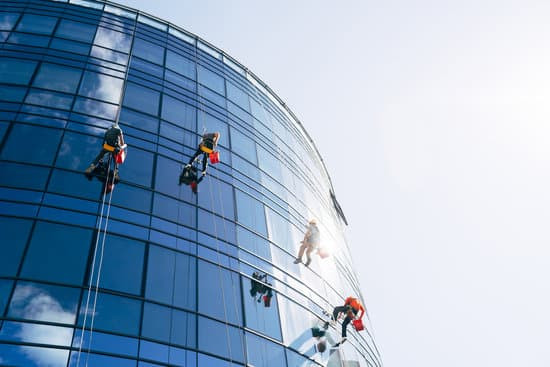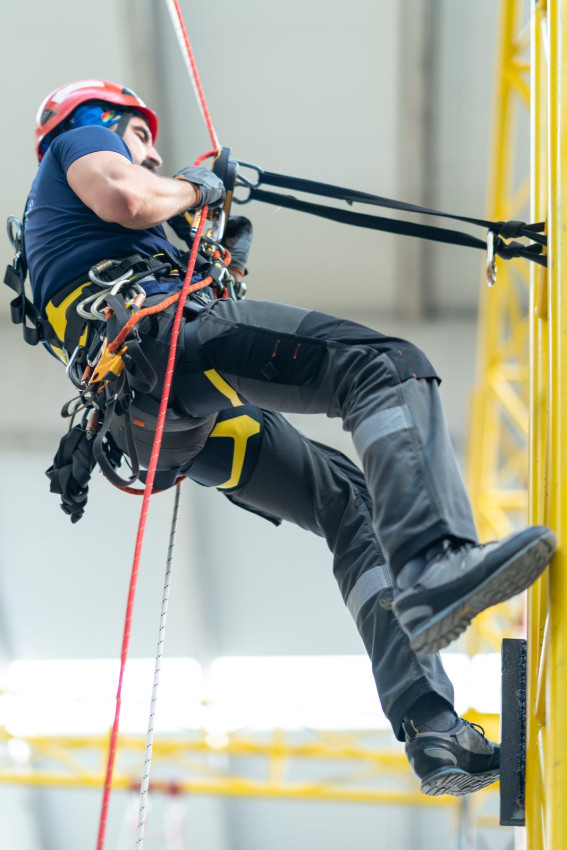What is the work of an industrial climber like in winter?
The work of an industrial climber continues throughout the year. However, the winter period is a time of hazardous conditions for working at heights. What are the responsibilities of altitude workers in winter?
Types of altitude work in winter
There is a range of winter work carried out by specialist industrial climbers.
Snow clearance from roofs
One cubic metre of snow weighs up to 200kg, and can weigh up to 800kg in wet snow. This demonstrates what a huge threat falling on roofs poses to the structure of buildings, as well as to people.
Slippery roof surfaces are a risk of accidents. It is therefore worth using the services of professional height workers. They have specialised equipment and knowledge of working safely in winter conditions. The mountaineers will not only clear the snow from the roof covering, but also secure the area around the building.
Overview of gutters and roofing

In winter, it is extremely important to systematically inspect gutters and roof coverings. Lingering snow and rain, as well as low temperatures, are the cause of damage to a building's façade. Such neglect can even lead to the collapse of the building.
Overview of snow clearing systems
More and more people are choosing to install snow clearing systems. However, regular inspection of the equipment must be taken into account. This service is provided by industrial climbers who can safely inspect the condition of the system in question.
Window cleaning
Numerous snow and rainfalls are the reason for window contamination. Due to the health and life risks involved, it is advisable to leave this activity to specialists in high-rise work.
Hanging billboards
One of the year-round works is the regular changing of billboards placed on the facades of high-rise buildings.
Requirements for the work of a mountaineer in winter
The work of mountaineers in winter is mainly to ensure the safety of other people and buildings. However, in order for this to happen they must perform their duties professionally and fulfil certain requirements:
- being qualified to work during the winter period,
- up-to-date medical examination,
- regular vocational training.
On the employer's side, too, there are important requirements for the tasks of its employees in winter.
Provision of personal protective equipment for climbers

In addition to specialist climbing equipment, i.e. protective helmet, harness and rope, the climber also needs other items to ensure his or her safety during winter work. These include non-slip footwear, but also a suit that allows work in cold temperatures.
Designation of hazardous area
One of the most important safety rules is to mark the vulnerable area in an appropriate manner. The area around the building where work will be carried out should be cordoned off and marked.
Warm room and refreshments
When working in the cold, breaks are important so that the worker can warm up and rest. Such a place should be provided by the employer to the climber. Equally important is access to warm drinks and a meal. However, it is worth noting here that the employer is obliged to provide the worker with a warm drink when the temperature outside is below 10°C. A warm meal must be provided when the climber's work results in an energy expenditure of 1500 kcal for men and 1000 kcal for women.
The most popular questions
Do I, as an employer, have a duty to provide a hot meal to the employee-athletes?
Yes, the employer is obliged to do so if the employee's energy expenditure during the performance of his/her professional duties is 1,500 kcal for men and 1,000 kcal for women.
How do I mark the area around the building when clearing snow from the roof?
When shovelling snow from roofs, it is necessary to cordon off hazardous areas. It is advisable to use special information boards and yellow-black PVC warning tape for this.

